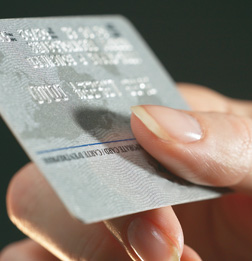The number of identity frauds increased once again in 2017, with almost 175,000 cases recorded, according to the fraud prevention trade body Cifas.
Although this was only a one per cent increase compared with 2016, it’s a 125pc increase compared with ten years ago. The difference this year, over previous years, is that the increase is not down to increases in fraudulent applications for plastic cards and bank accounts, which are the products most frequently targeted by identity fraudster, but due to targeting of other sectors such as telecoms, online retail and insurance.
This ‘retargeting’ by identity fraudsters can be seen as a shift towards more accessible products, such as mobile phone contracts, online retail accounts, retail credit loans and short-term loans.
Also increasing last year was the number of money mules – individuals who allow their bank account to be used to facilitate the movement of illegal funds – a form of money laundering. Individuals are being targeted online by criminals promising ‘easy cash’, or encouraged by an acquaintance to transfer funds for them in exchange for a payment.
In 2017, Cifas members identified almost 11pc more bank accounts that bear the hallmarks of money mule activity than they did in 2016 – over 32,000 cases. Criminals are continuing to target younger people – there was a 27pc growth in the number of people aged 14 to 24 that have been identified as carrying out this type of fraud. More than a third of victims of bank account takeovers were over 60, so age is a key consideration for facility hijackers when selecting who they target.
Cifas Deputy Chief Executive, Mike Haley said: “It’s clear from this year’s Fraudscape that fraud in the UK continues to evolve. As some targets become harder to crack, criminals turn to what they consider are softer targets. Fortunately, many of these sectors such as telecoms and insurance, share their fraud data through Cifas and are detecting more fraud attempts. As fraudsters see their attempts to obtain these products become more difficult, the question will arise about where they will target next.
“The small reduction in the overall number of detected frauds is welcome but it’s hard to say whether we are beginning to see the turning of the tide. The absolute volume of fraud is still frighteningly high and much more still needs to be done to reduce its prevalence, including greater collaboration and sharing of fraud risk data between industry, government, and law enforcement. Working together, organisations who are members of Cifas prevented over £1 billion worth of fraud last year and Cifas will continue to lead the way in the fight against fraud and financial crime.”
Comment
Lisa Baergen, director at NuData Security, a Mastercard Company, said: “Financial fraud offers a lucrative source of income for cybercriminals, with 4.7 million fraud incidents last year. With such tempting promise of high reward and low prosecution rates, emboldened cybercriminals and have grown in their sophistication, exploiting the human-interest factor by posing as banks or suppliers and then duping consumers into revealing their personal details. These scams have also proved effective in targeting commercial organisations, as senior executives have been tricked into revealing sensitive information which enables access to a company network.
“All forms of identity fraud are appallingly high in the UK and the damage inflicted on the public continues to grow. Unless the UK wants to see these rates climb ever higher, institutions, governments, and private companies must take these threats as seriously as other forms of crime. Multi-layered solutions are available now in the marketplace that can help mitigate much of this type of cyber fraud. Organisations that transact online, such as banks, eCommerce stores, travel agencies and other vendors can take a more nuanced approach to authentication by evaluating as much contextual information about customer’s interactions as possible to determine if it truly is the right user. Multi-layered technology that includes passive biometrics and behavioural analytics can distinguish good from bad users even when new devices and correct credentials are used because they rely on a different set of data – the customer’s behaviour. Removing the value of stolen credentials from the hands of criminals can re-balance the online identity proofing environment for consumers and organisations.
“The increasing volume of attacks globally has also been attributed to more fraudsters willing to commit the crime, more data available on the black market, and more financial institutions and merchants that are vulnerable to attacks. To combat these types of attacks, consumers should always report emails to their banking provider. No legitimate organisation will ask for security or banking details through email, so consumers need to be suspicious of any email that requests this information.”
In response to numbers of young people affected by fraud, last month Cifas and the PSHE Association launched four anti-fraud education lesson plans (aimed at 11 to 16 year olds) to raise awareness in schools. For members such as banks and insurers visit https://www.cifas.org.uk/membership/cifas-members.
If you have fallen victim to identity fraud, report to Action Fraud on 0300 123 2040 or online at www.actionfraud.police.uk.










